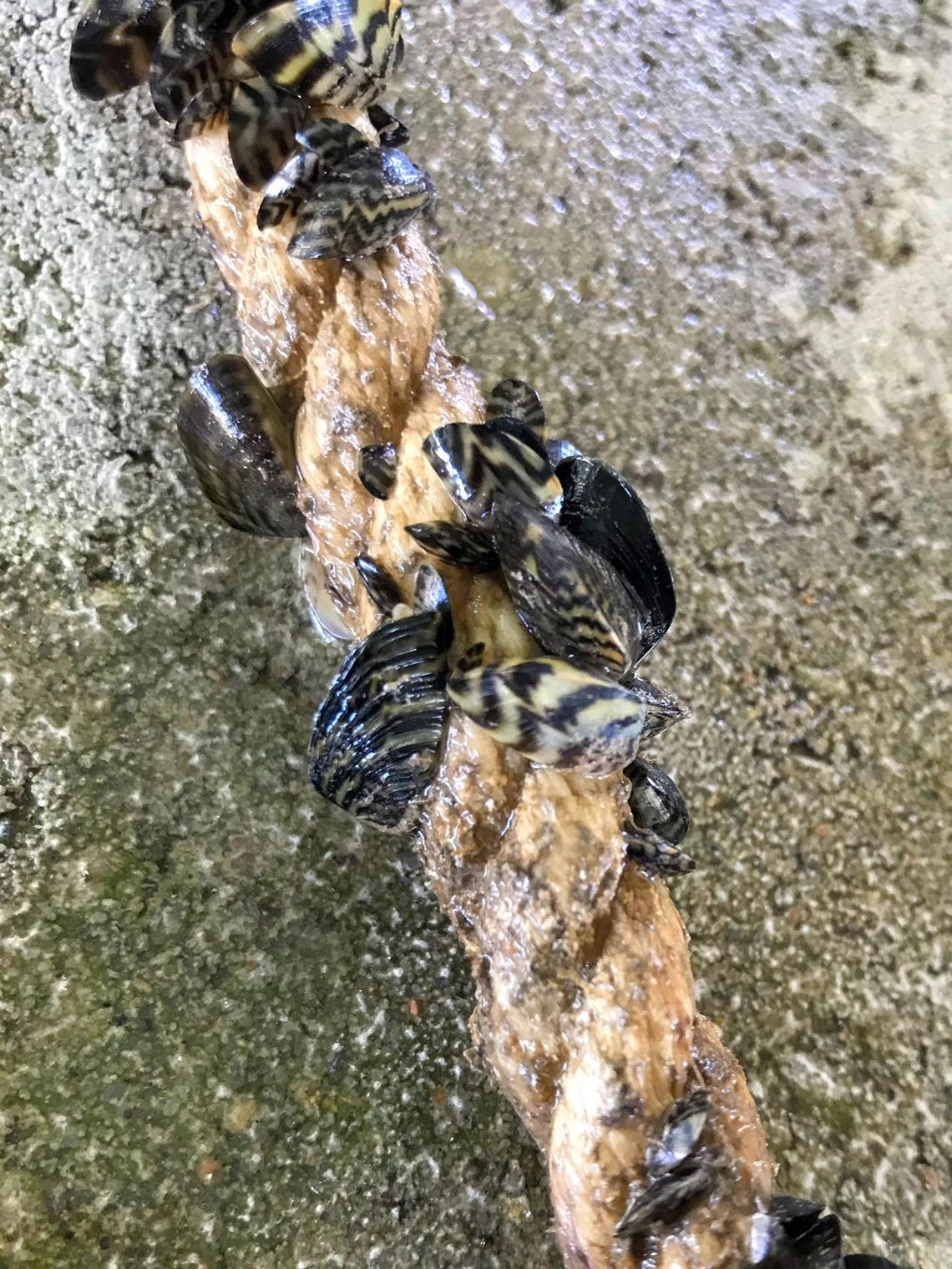It’s not likely that San Marcos tap water will have the “fishy” smell that plagued Austin’s municipal supply in recent days, a city official says, because the system has been engineered to prevent infestation by invasives like Zebra mussels.
However, drinking water isn’t the only thing at risk. It may be just a matter of time, another expert says, before the invasives show up in the San Marcos River and even Spring Lake.
The city has drawn 80 percent of its drinking water from Lake Dunlap, downstream from Canyon Lake, since 2000. Tom Taggart, the city’s director of public services, said the intake at Lake Dunlap is equipped with a chemical feed that kills the mussels with sodium permanganate.
“We feed that about every two weeks,” he said. “It’s a low dosage, but enough to kill any villagers (microscopic mussel larvae) that would be present.
The mussels have not been detected in Lake Dunlap but the villagers have been, Patty Gonzales of the Guadalupe Blanco River Authority said.
Taggart said there are also precautions in place for the raw water line from the lake to the city’s surface water treatment plant off Hwy. 21 and at the intake of the plant itself. “The problem Austin had is they let (larva) mature into Zebra mussels in large colonies that will basically coat all the surfaces — hundreds of thousands of them,” he said. “When they die they create a lot of organic matter, and that’s the problem Austin has … we’re in a different position.”
However, he downplayed the risk of mussels thriving in the San Marcos River, at least in its upper portions.
“They feed on phytoplankton and over time tend to clarify water. It’s a desirable side effect they can make the water much cleaner … the bottom line is our water is so clean in the river it’s probably not a very good food source for them — there’s not a lot to eat in the stretches of river closest to the springs. It’s probably not the best habitat for them until you get significantly downstream.”
Dr. Thom Hardy of the Meadows Center for Water and the Environment said he’s “unhappy” Taggart discounted the risk to the river, which he said appears to be inevitable.
Although the vast majority of Zebra mussel infestations can be traced to transference on a boat or trailer, in bilge or other “trapped” water, they can also hitchhike on water craft, scuba equipment, even bathing suits and shoes. “That’s the real problem,” Hardy said. Given how many people come to San Marcos after recreating in the Guadalupe River, which is already infected, “it just seems like a hopeless situation.”
Hardy noted that the “can ban” now reinstituted in New Braunfels will likely send even more people to the San Marcos River.
“If you go to Montana and other places they are concerned about Zebra mussels, they literally have boat docks and entry points to major rivers with check points” where any type of equipment entering the water is sterilized first.
Spring Lake has those strict protocols in place. Scuba divers and entrants in the Texas Water Safari are required to sterilize all equipment with a bleach solution before entering the water. But, Hardy noted, some people access the Lake near the dam, bypassing those procedures.
He noted that when scientists are exploring a springs system, they take great care to make sure they don’t transfer either plant or animal material from one system to the other, as each is unique.
“Zebra mussels are a clear and present danger,” he said. But they are just the latest invasive concern, not the last.
For more on preventing the spread of the mussels, their current range and other facts visit Texas Invasives' website.







